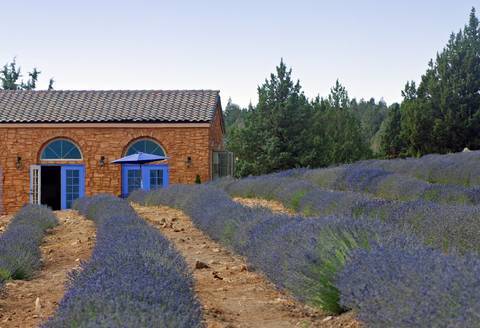Did you know that lavender essential oil may be from any one of four totally unique lavender plants? Did you know there are significant differences in the chemistry of the four? Did you know that the oil you should purchase will depend on how you plan on using it? If you didn’t know, then read on.
Lavandula angustifolia: (sometimes spelled augustifolia) This lavender is often referred to as true lavender, English lavender, or Lavendula officinalis.
Lavandula latifolia: (Formerly Lavandula spica, is commonly referred to as spike lavender).
Lavandula hybrida: Commonly known as lavandin. This is a cross between L. angustifolia and L. latifolia.
Lavandula stoechas: This type of lavender is not cultivated extensively for commercial use. It has a strong camphor odor similar to rosemary. It is used in perfumes and soaps and to treat respiratory infections.
Now let’s look at the differences. For our purposes, we’ll compare the two most commonly cultivated lavenders, L. angustifolia or true lavender and L. latifolia or spike lavender. Since lavandin is a cross between the two, the concentration of active ingredients will be a mixture of both. Suffice it to say that lavandin will have a higher concentration of camphor than true lavender, but probably less than spike lavender. Testing must be done to determine the actual concentrations of ingredients in lavandin.
The linalool factor
Linalool is a terpene alcohol. It is used in the perfume industry as a scent. Limited studies on animals indicate a capacity of linalool to significantly relieve stress. Linalool is also associated with certain insect repellants. However, studies are weak as to its efficacy. English lavender has roughly 28% compared to that of spike lavender 49%.
It’s important to note that linalool will oxidize with age and exposure. When this happens there’s an increased likelihood of allergic reaction. One Swedish study indicated roughly 5% – 7% of patients exposed to a patch test with oxidized linalool had an allergic response. To avoid this buy only what you need and keep the bottle capped.
Then linalyn acetate factor
This is a fragrance chemical found in English lavender and bergamot (a highly fragrant essential oil). English lavender contains about 33% linalyn acetate, an acetate ester from linalool. Linalyn acetate is not present in spike lavender.
The eucalyptol factor
Eucalyptol has a camphor-like fragrance and is used for as a treatment for asthma, coughs and colds. It also reduces pain when applied topically. If ingested in large quantities, eucalyptol is toxic. However, it is used in small quantities as a flavoring in many products without harmful side effects. English lavender contains no eucalyptol compared to 26% in spike lavender.
The camphor factor
Camphor is antimicrobial and has a slight numbing effect when applied to the skin. It is frequently found in anti-itch and cooling products. It is also used as a cough suppressant. English lavender contains less than 1% camphor compared to 13% in spike lavender.
Summary
Okay now, let’s put it all together. For fine perfume, the only choice in scents to use is English lavender. Based on the active ingredients, spike lavender would be my pick for therapeutic uses in treating soreness, respiratory problems and possibly for antibacterial and antiviral purposes. It would also be my pick if I wanted to use it as an insect repellant. I might also use lavandin but that would depend on whether my source could give me a breakdown on its ingredients.
One last thing – the hair connection
One thing I would like to add that may interest some of you was a study done using lavender with other oils to treat Alopecia Areata. Alopecia Areata is an autoimmune disorder where a person’s hair falls out in patches. The 1998 study was conducted over a 7 month period with good results in regrowing hair on the 35 patients tested. A lotion was created using the following ingredients “The active group received the essential oils: Thyme vulgaris(2 drops, 88 mg), Lavandula agustifolia (3 drops, 108 mg), Rosmarinus officinalis (3 drops, 114 mg), and Cedrus atlantica (2 drops, 94 mg). These oils were mixed in a carrier oil, which was a combination of jojoba, 3 mL, and grapeseed, 20 mL, oils.” Patients were instructed to massage the oil into their scalp for 2 minutes and then wrap their head with a warm towel to aid absorption. Patients were instructed to do this every night. If you go to http://archderm.ama-assn.org/cgi/content/full/134/11/1349#ACK , you can read all about it.
There, now you know the lavender story.
Now go have fun and relax.


Thank you so much for sharing such useful information. I would like to read more about other oils. Linda
Linda,
Thank you so much for the comment. It’s nice to be appreciated. We do have information on some of the other oils and will be adding to this over time. Just type in “oil” in the search box to see more.